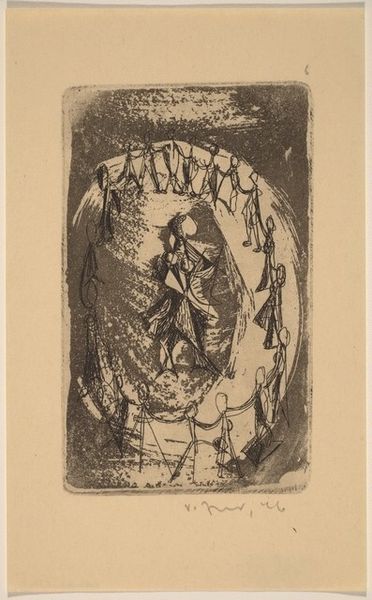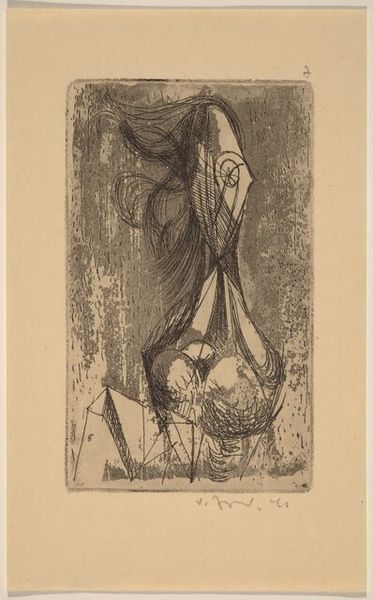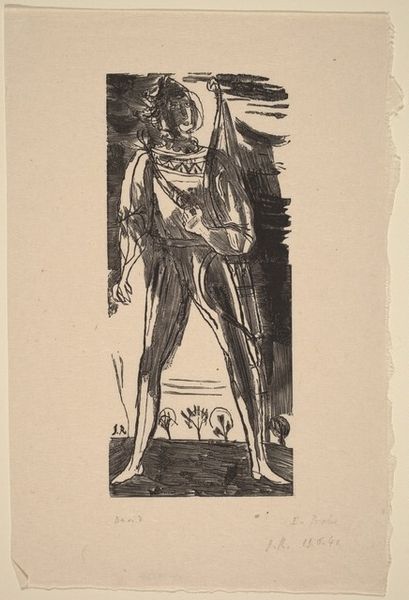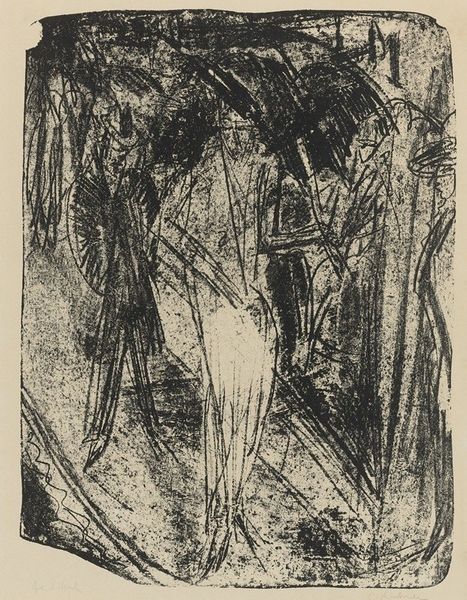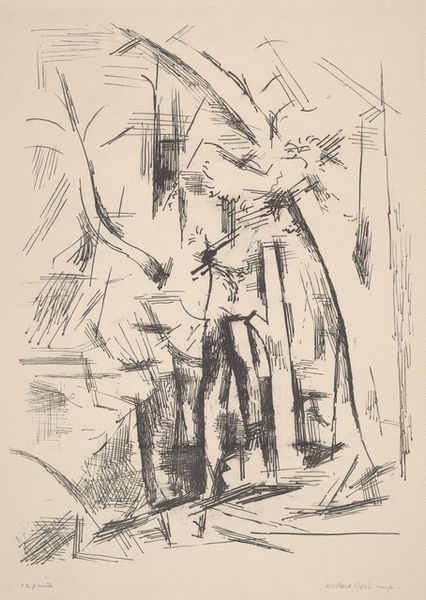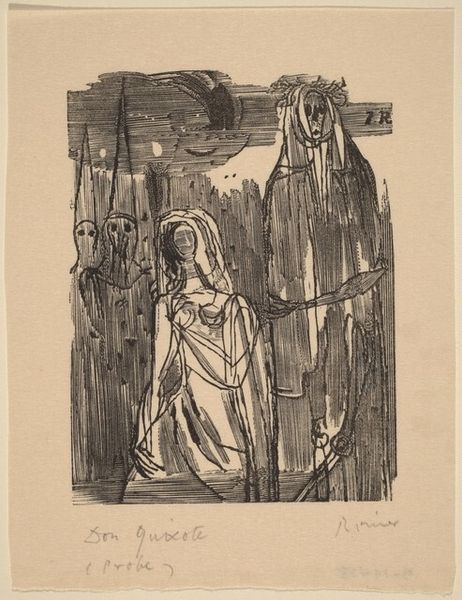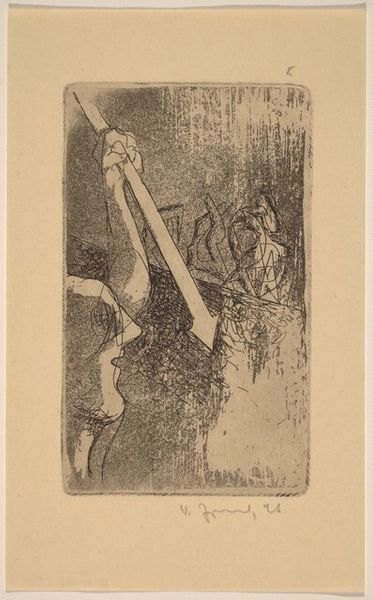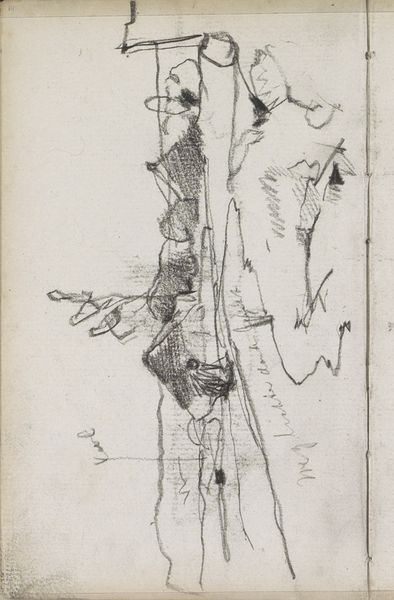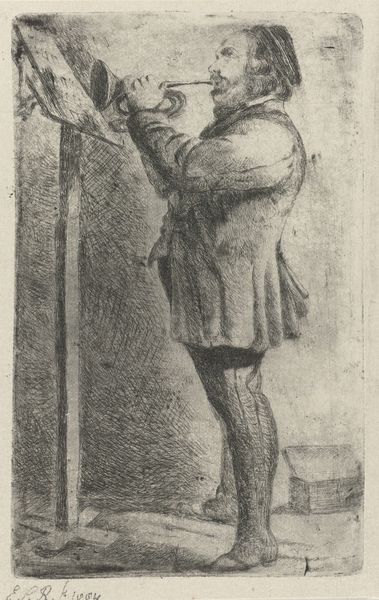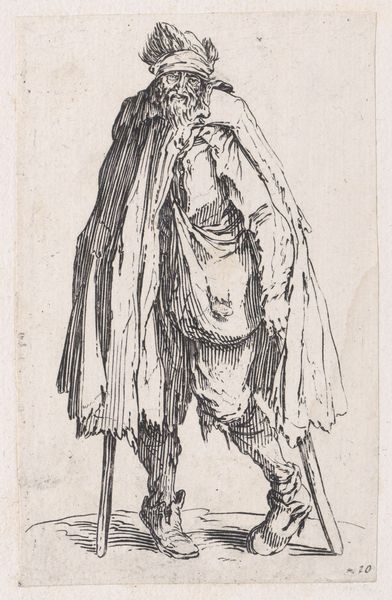
Copyright: National Gallery of Art: CC0 1.0
Editor: This is "Die Matrofon (?)," created by Imre Reiner between 1947 and 1948. It appears to be an ink drawing or print with symbolic elements and linear precision. I'm curious about how to read its visual vocabulary. What can you tell me about the composition? Curator: Look closely at how Reiner has used ink to construct these figures. The etching lines mimic the kind of technical drawings you’d see for industrial design. Are these figures even human? What materials could constitute their bodies? Look closely at the "Matrofon"—its body is structured like scaffolding, more like a fabricated object than a living organism. Consider what kinds of labor and materials may have influenced the artist in the Post-War years. Editor: So you're saying the method of production—the linear precision suggesting manufactured design—directly relates to the material representation of the figures themselves. How might we consider that tension, and the title itself? Curator: Precisely. The title hints at sound production. What do you know about 'Matrofon'? The title connects with "Matrosen," German for "Sailors,". The figures almost resemble marionettes—controlled, perhaps even manufactured, beings within a performance. Think about how ink, as a readily available medium, served artists in post-war Europe. Did Reiner aim to express alienation and control by blending industrial and figural elements? Editor: It's interesting how the scarcity of materials post-war may have pushed Reiner towards ink and printmaking, shaping his commentary on labor and identity through the very means of production. Curator: Consider how the process itself informed the message. The deliberate mark-making, mimicking technical drawings, reinforces the theme of construction and control, hinting at societal anxieties around industry and the changing nature of labor. Editor: I hadn't thought about how the material and technique could so directly amplify the themes of control. I am going to be on the lookout for works with strong connection between visual vocabularly and material constraints. Curator: Absolutely! Remember, art is a product of its time and is created by the interaction of intention and accessible materials. Considering the process, social contexts and availability provides invaluable information on interpretation of art production.
Comments
No comments
Be the first to comment and join the conversation on the ultimate creative platform.
